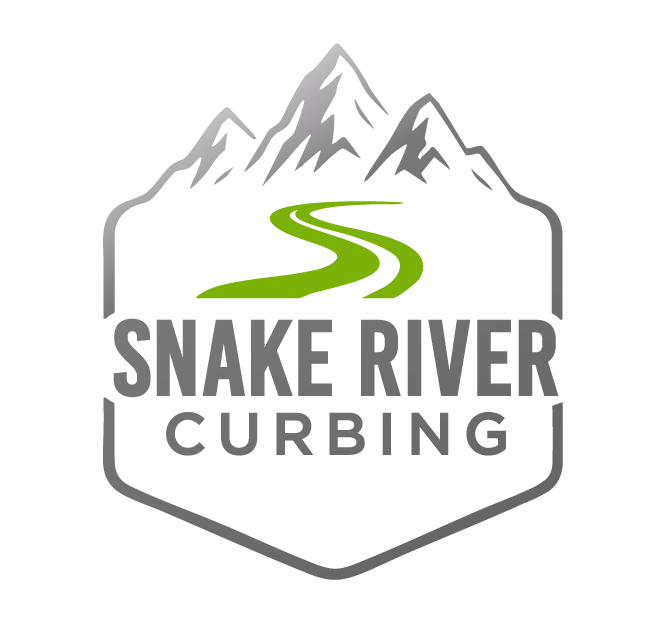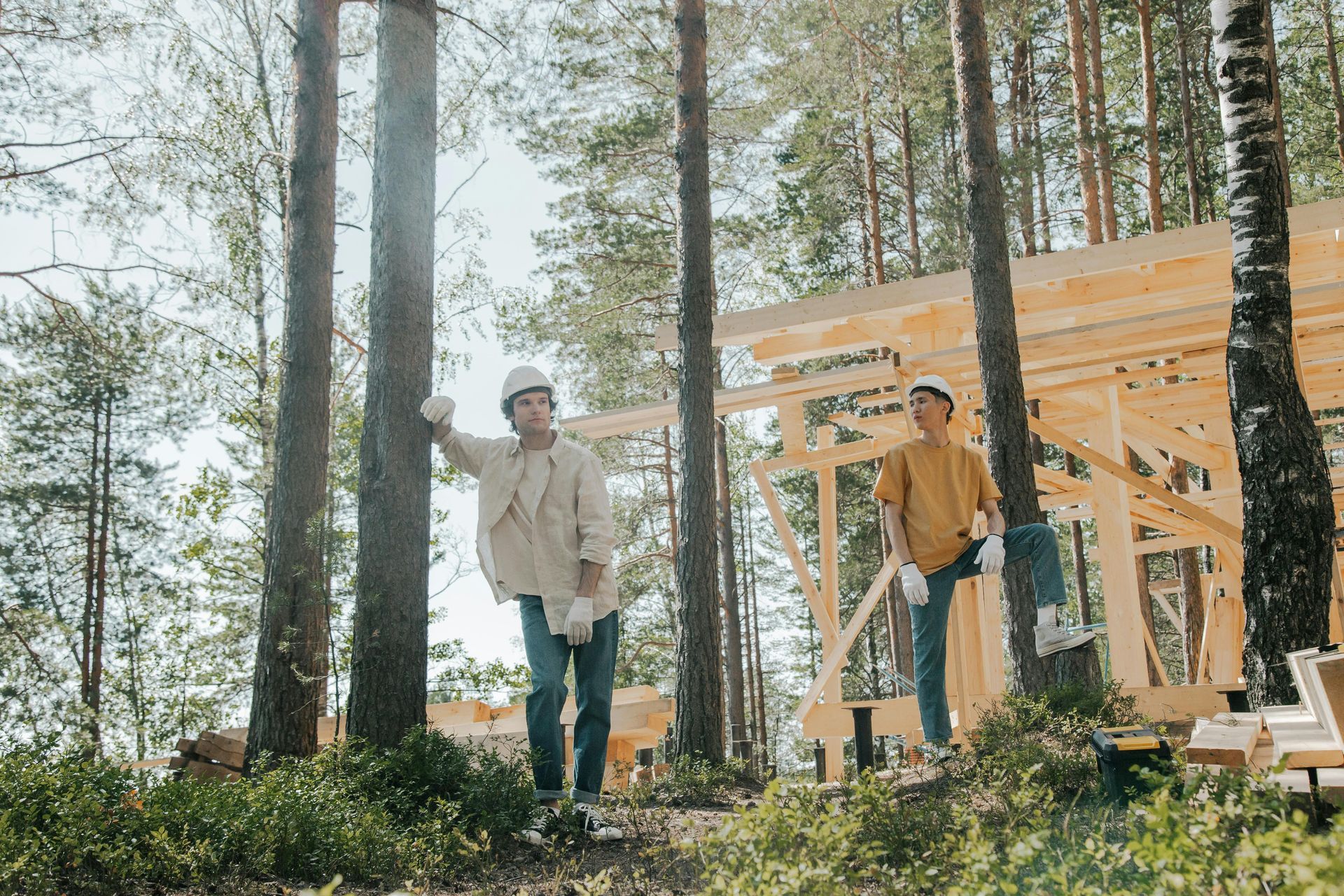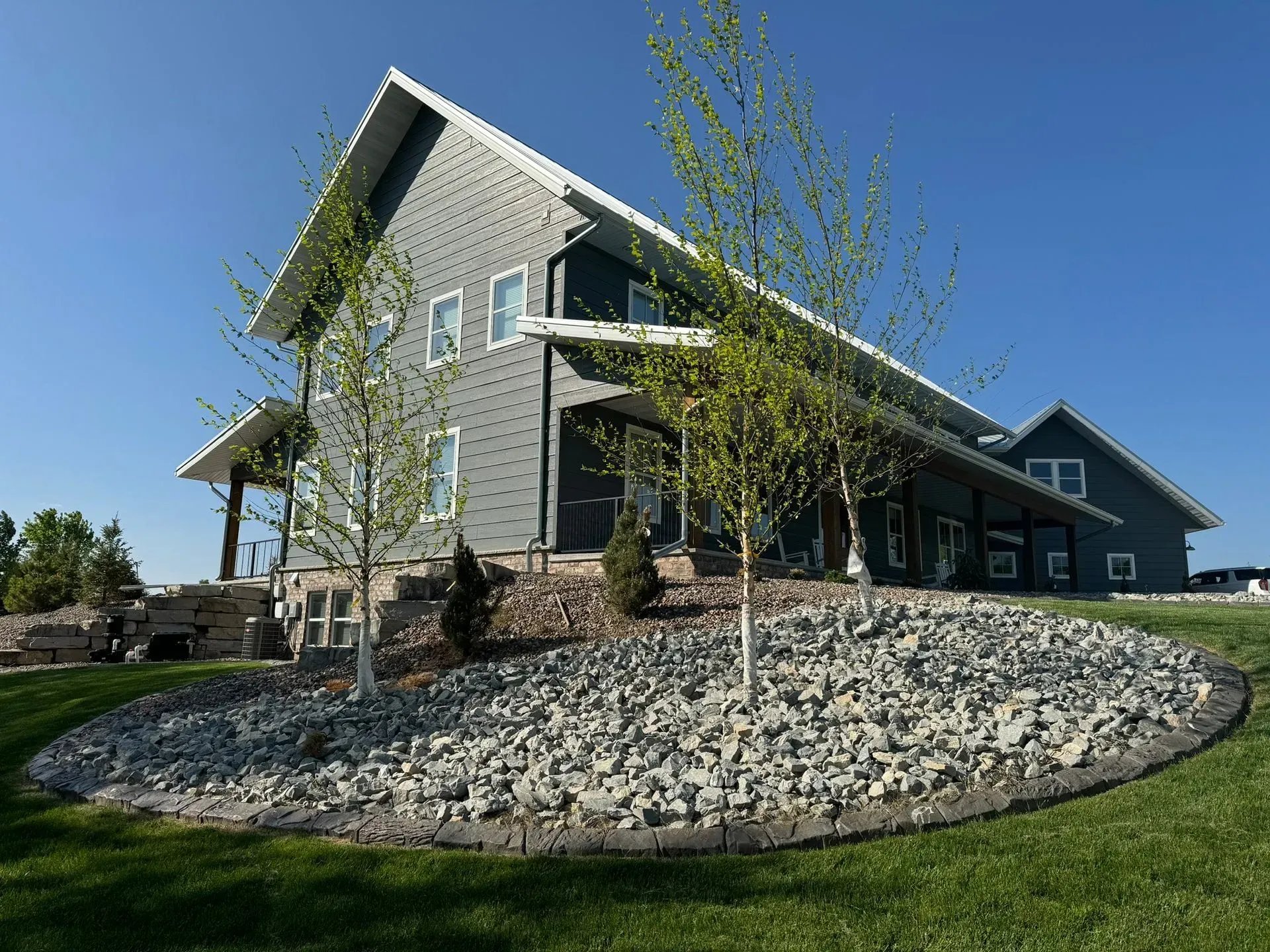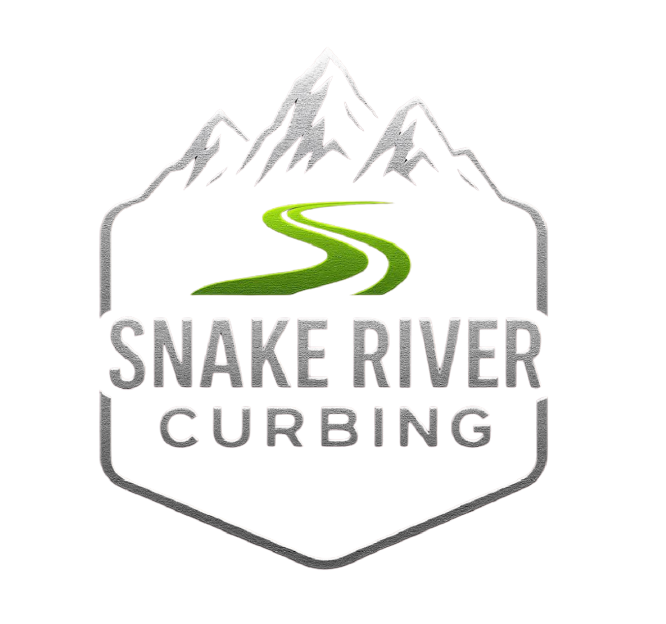What Is Landscape Curbing? Complete Guide to Types, Benefits, and Installation
Landscape curbing is an essential element in defining outdoor spaces, creating visual boundaries between different functions, and controlling soil and water movement. Snake River Curbing not only enhances the aesthetics of a garden or yard but also improves drainage, maintenance, and overall functionality. This guide explains what landscape curbing is, its available types, installation process, and the benefits for your outdoor projects.
What Is Landscape Curbing and Why Is It Used?
Landscape curbing, is the creation of a border along garden beds, pathways, and other outdoor areas using materials such as concrete, brick, stone, or plastic. It defines spaces, controls soil and mulch placement, and helps prevent erosion and weed growth. The curbing creates a clear separation between lawns and landscaped beds, enhancing functionality and aesthetics. By incorporating our process, tasks like mowing and weeding become simpler, while water management is supported by directing runoff; this approach even allows homeowners to experiment with lighting, color, and textures. Moreover, a well-defined curbing system adds value to a property by providing a polished, low-maintenance appearance and ensuring the durability of garden elements.
For more details, please refer to our FAQs about landscape curbing.
How Does Landscape Curbing Enhance Outdoor Spaces?
Curbing enhances outdoor spaces by creating distinct zones for a well-organized layout, making areas more inviting and easier to navigate. Clearly defined borders distinguish manicured lawns, flower beds, and pathways, contributing to a harmonious outdoor design. By using various materials and colors, landscape curbing accentuates textures and contrasts, complementing features like pavers, artificial turf, or decorative lighting. The finished look exudes permanence and craftsmanship, reduces maintenance by preventing grass encroachment and soil erosion, and ultimately supports a more organized, long-lasting garden or yard.
Common Materials Used for Landscape Curbing
Landscape curbing materials vary, each with unique advantages:
- Concrete: Durable and versatile; can be molded into various shapes and colored to fit your design.
- Brick and Stone: Provide a classic, timeless look ideal for traditional or natural landscapes.
- Plastic and Rubber: Offer ease of installation, flexibility, and are budget-friendly for DIY projects.
Each material differs in maintenance needs, longevity, and resistance to weather. While concrete and stone may require professional installation due to longevity, plastic options offer cost-effectiveness and easier installation but might not match the visual impact of traditional materials.
How Does Landscape Curbing Differ From Other Edging Options?
Unlike temporary solutions such as garden tapes or plastic strips, landscape curbing is designed to be permanent and structurally robust. Its heavy, durable materials ensure boundaries remain intact even in harsh weather or heavy traffic. Additionally, its design improves drainage and soil retention while contributing to overall aesthetic cohesion, making it superior for long-term maintenance and complex landscape designs.
Types of Landscape Curbing
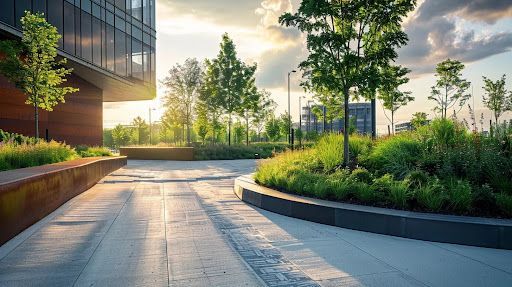
Several types of landscape curbing exist, each suited for particular design needs, durability, and cost considerations.
Brick Curbing Vs. Stone or Plastic
Brick curbing is favored for its warm, classic appeal that complements traditional designs. When sealed and maintained properly, brick offers durability and resistance to weathering and can be arranged in intricate patterns. Compared to natural stone, brick provides a more uniform appearance, while plastic curbing, though cost-effective and easy to install, lacks the substantial visual impact and permanence of brick or stone. The choice among these materials depends on design vision, budget, and required long-term maintenance.
When Is Plastic or Rubber Curbing Recommended?
Plastic or rubber curbing is ideal when ease of installation and cost efficiency are priorities. These lightweight and flexible materials are suited for DIY projects and areas where a temporary look is acceptable. They effectively contain mulch and soil, define borders, and offer additional benefits like shock absorption near high-traffic or play areas. Although not as durable or visually refined as concrete or brick, they are excellent for small projects or situations that require frequent layout changes.
How Is Landscape Curbing: A Step-by-Step Process Explained
Installing landscape curbing involves several key steps to achieve a durable, attractive finish, regardless of whether you DIY or hire professionals.
What Tools and Materials Are Needed for DIY Landscape Curbing?
For DIY installation, you will need the following:
Tools: Shovel (for excavating), tamper (for soil compaction), level (for alignment), saw or chisel (for adjustments), and wheelbarrows or buckets (for mixing).
Materials: The specific material chosen (ready-mix concrete with reinforcement and form boards for concrete; mortar and leveling sand for brick or stone; preformed sections for plastic or rubber curbing).
Having the right tools and materials is crucial to avoid delays and ensure a professional-looking finish.
What Are the Key Steps in Professional Landscape Curbing Installation?
Professional installations like Snake River Curbing follow these steps:
Layout: Mark the desired curbing line using stakes and string.
Excavation: Dig a trench along the line and fill it with a layer of crushed stone or gravel for drainage.
Setting the Curbing Material: For concrete, set up form boards, pour, level, and finish the concrete. For brick or stone, lay the pieces using mortar.
Finishing Touches: Clean off excess materials and backfill around the curbing to stabilize it.
Each step is executed precisely to ensure both function and aesthetic appeal.
How Long Does Landscape Curbing Installation Typically Take?
Installation time varies depending on the following factors:
- Small Residential Projects: May take one to two days with professional help.
- DIY Projects: Might take longer due to required excavation and custom shaping.
- Larger or Complex Designs: Could extend to several days, especially for commercial projects with multiple curves and edges.
Proper planning and scheduling are essential to accommodate weather delays and material curing times, ensuring a strong, lasting installation.
What Are the Benefits of Landscape Curbing for Your Garden or Yard?
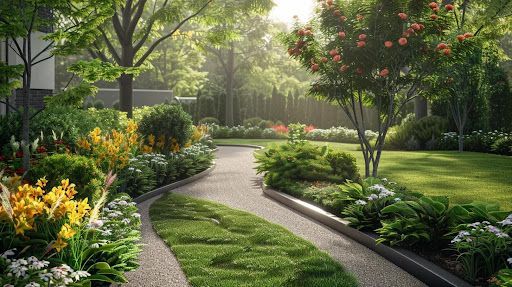
Landscape curbing enhances your garden or yard both visually and functionally by defining zones and simplifying maintenance. Here are the benefits of landscape curbing:
Landscape Curbing Improves Lawn Maintenance
By clearly delineating areas, curbing prevents grass encroachment into flower beds and garden spaces, making mowing, watering, and fertilizing more efficient. It also reduces weed spread and soil erosion, promoting a healthier lawn. With defined borders, specialized equipment can work more effectively, resulting in a cleaner and more sustainable outdoor environment.
Landscape Curbing Increases Property Value
A well-designed curbing system can boost property value by creating a neat and professionally maintained exterior. Homebuyers appreciate the clear, low-maintenance boundaries and the enhanced curb appeal that well-executed landscape curbing provides, leading to potentially higher market values and a more attractive resale proposition.
Curbing Help With Soil and Water Management
Curbing plays a vital role in managing water runoff and soil erosion by channeling rainwater into designated drainage areas and preventing the washout of fertile topsoil. This controlled drainage minimizes pooling and flooding, preserves plant health, and reduces the need for frequent soil amendments, making it a key component in sustainable landscape design.
Maintenance Required for Landscape Curbing
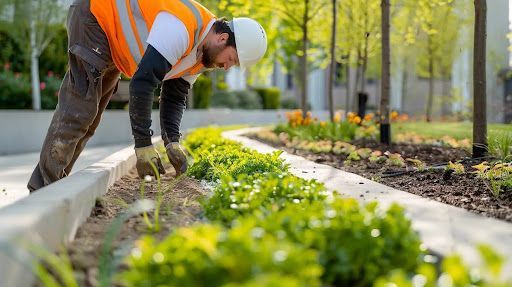
Regular maintenance ensures landscape curbing remains effective and attractive over time. Routine upkeep prevents issues such as cracks, shifting, or soil erosion and preserves the overall design of your outdoor space.
How Often Should Landscape Curbing Be Inspected and Cleaned?
It is best to inspect curbing at least once every season and after severe weather events. Early detection of damage like cracks or shifts allows for prompt repair. Regular cleaning with a hose or pressure washer removes dirt and moss, maintaining the intended color and texture. Occasional application of sealants to brick or natural stone can help protect against weathering.
What Are Common Repairs Needed for Different Curbing Materials?
- Concrete: May develop cracks from shifting soil or freeze-thaw cycles; repairs involve sealing cracks or professional intervention.
- Brick: May require repointing to replace deteriorated mortar.
- Natural Stone: Might need resetting or replacement of individual stones.
- Plastic/Rubber: Typically involves re-securing loose pieces or cleaning to correct misalignment.
Timely repairs prevent minor issues from evolving into major problems.
How Can You Extend the Life of Your Landscape Curbing?
Regular cleaning, timely repairs, and periodic inspections are key. Applying protective sealants and designing your landscape with proper drainage and soil stabilization further extend the curbing's life. Investing in quality materials and establishing a consistent maintenance routine ensures your outdoor space remains pristine for years.
Where Can You Buy Landscape Curbing Materials and Services?
Choosing the right supplier and contractor is crucial. Options range from large home improvement stores such as Home Depot and Lowe’s to specialized local landscape supply shops. Factors to consider include product quality, price, and reliable after-sales support.
Factors You Should You Look for When Choosing a Landscape Curbing Contractor
Select contractors with a proven track record, positive customer reviews, and experience with the specific curbing material you desire. Certifications, licenses, and documented past projects are indicators of professional competence. A reliable contractor provides detailed quotes, clear timelines, and effective communication throughout the process.
Can You Find DIY Kits for Landscape Curbing?
DIY kits are widely available for those with basic carpentry or landscaping skills. These kits typically include preformed curbing sections, installation guides, and necessary hardware, reducing both the need for specialized tools and overall cost. For larger or more intricate designs,
consulting with professionals is advisable to ensure the best results.
| Material Type | Average Cost per Linear Foot | Durability | Maintenance Requirements | Ideal for |
|---|---|---|---|---|
| Concrete | $8 - $15 | High | Low – Occasional sealing | Permanent installations |
| Brick | $8 - $15 | Moderate to High | Periodic mortar repair | Traditional designs |
| Natural Stone | $15 - $30 | Very High | Occasional cleaning/sealing | High-end, custom looks |
| Plastic/Rubber | Under $5 | Moderate | Low, simple cleaning | Budget-friendly, DIY kits |
Final Thoughts
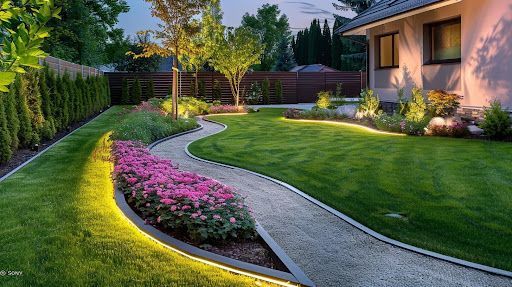
Landscape curbing is a powerful element that enhances outdoor spaces by defining boundaries, improving drainage, and managing soil. Whether you choose durable concrete, appealing brick, or cost-effective plastic options, quality curbing transforms your garden or yard. Plan carefully, consider professional installation for complex designs, and maintain your curbing to ensure lasting performance and visual appeal. Investing in quality curbing is a practical, aesthetically rewarding decision for any landscape design.is recommended.
For more detailed insights into , please continue reading to understand each step thoroughly. It is designed to help homeowners, business owners, and facility managers understand the process, costs, and upkeep of landscape curbing to make informed decisions for their outdoor projects. For additional information about our process, do not hesitate to contact us.
